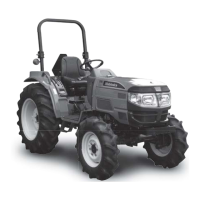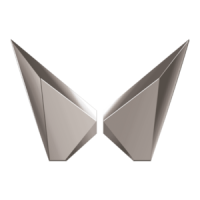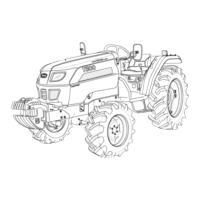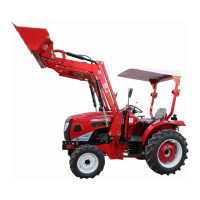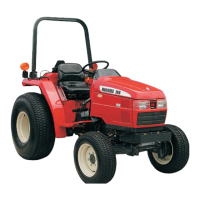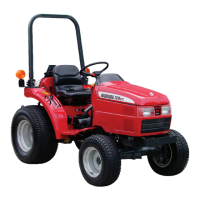57
General
1. Description
These tractors are equipped with ‘Vary
Touch’ hydraulic system consist of an
engine driven gear type pump, lift housing
connecting pipes and filter.
The reservoir is transmission housing. The
oil is common for a transmission and
hydraulics. The strainer is fitted on
transmission, addition paper filter in
corporated on suction line, with as ensured
100% filteration, Lift cylinder, control
valves, control valve linkage and rock shaft,
carries the lift arm for the three point
linkages. The control valves provided a jack
tapping to accommodate a self sealing
coupling which provides hydraulic power
to any equipment fitted with single acting
hydraulic cylinder. A bell crank lever
housed in the rear frame carries a top link
which act as a sensing arm with control
valve linkage.
2. Principle of Operation.
The direction of flow is from the pump
through the reponse compenseter valve,
spool control valve to cylinder and non
return valve / checke valve is the regulator
and the restricting orifice which also
connect to the sleve control valve assembly.
The draft and lowering the system is
prodected by a relief valve between the
pump and response control (compensator)
valve.
The control valve is operated by two levers.
The inner lever control the implement
position and outer lever controls Implement
draft. When one of the levers is in use, the
other lever MUST be in the fully forward
position to close the lift port and open the
lowering port of the circuit. Thus the only
flow delived to the cylinder is that
controlled by the lever in use.
When the spool in use is in neutral or hold
position there will be no return to reservoir
from the spool and the pressure either side
of the restricting orifice will equalise. As
the two sides of the regulator piston (11)
have different areas this pressure will have
more effect on the greator face thus
moving the piston to hold the regulator
ball (9) off its seat allowing pressure oil to
pass the ball and return the reservoir
through the regulator port (35).
When the spool is moved to open the lift
port (18) to reservoir, the resulting flow
through restricting orific will cause the
pressure drop at the regulator allowing the
regulator ball to seat. The pressure will
then open the non return valve/check valve
against its spring and allow pressure to
reach the flift cylinder.
When the spool is moved to lower, the flow
through the restrictor port / pilot port (18)
is stoped to un seat the regulator ball and
allow pressure from the cylinder discharge
through the lowering port (36). The non
return valve / check valve. Closes due to its
spring to prevent return oil entering the
pressure line.
a. Position Control (Dia. Pg No.57)
When the positon control lever (5) is moved
to LIFT, the PC actuating link (6) pushes the
spool (10) in control valve (11) under the
action of return spring opening the pilot
port (18). The resulting pressure drop
allows the regulator ball to seat and
pressure is directed to the cylinder.
As the rocks shaft rotate and the lift arms
and implement lift, the PC cam contacts the
PC roller assy to move the PC linkage (6)
and plunger to closed the pilot port. The
regulating pressure built up, moves the
regulator piston to unseat the regulator
ball allow pump pressure to discharge to
reservoir through the regulator port (35).
The lift arms and implement are then held
by the oil locked in the cylinder (34). When
PC lever (5) moved to lower the PC
Hy-tec Hydraulics
